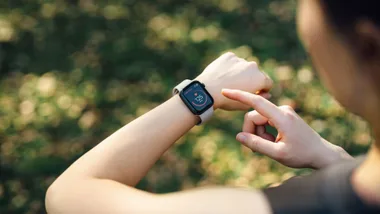
When you get the kids home from school, do they reach for a chocolate bar themselves? Or do you hand them a carrot? A new CSIRO Preventative Health National Research Flagship report has shown some shocking facts about Aussie children and their after-school snacking. Here’s how to encourage your kids to eat their way to a healthier, happier life.

A shocking 46 percent of children surveyed admitted they eat cakes and pastries between 3pm and 5pm, while 17 percent said that they eat confectionery. “For some time,” leading paediatric dieticians Susie Burrell says, “we have believed that the after-school period was a major danger time when it comes to children overeating non-nutritious, snack foods and this data confirms our beliefs.”

Children aged five to eight eat one sixth of their total recommended daily allowance of energy (1300 kilojoules) during those two hours when they get home from school. “What’s particularly concerning,” Burrell says, “is the amount of saturated fats kids are consuming during this period.” Saturated fats can be found in foods such as potato chips and cakes.

Did you know that one in four Australian children is overweight or obese? “It is time for the after-school period to be looked at as a key time for good nutrition in childhood,” Burrell says.

So what should we be doing to make a difference? Burrell has some advice for parents handing out unhealthy snacks to their children after a long day at school. “A nutritionally balanced snack food for children should be ‘nutrient dense’ and offer a number of key nutritional benefits rather than solely acting as a source of energy,” she says

Burrell warns parents to avoid junk food. “Highly processed, carbohydrate-based foods don’t offer the nutrients that children need, including calcium, protein and fibre,” she says. “These foods may also leave kids vulnerable to energy fluctuations and overeating.”

So what should we be feeding our children when they get home from school? “In general, protein-based foods such as yoghurt and other milk-based snacks as well as fresh fruit meet a number of nutritional requirements for growing children,” Burrell advises. “A range of child-friendly options are available including low-fat ice-cream and flavoured milk — foods kids love but with some nutritional benefits.”

The glycemic index (GI) measures how quickly blood sugar levels rise after eating carbohydrates. “Of all the data we have available on weight control,” Burrell says, “it appears that low-GI diets may be beneficial.” Give your children snacks such as fruit loaf, homemade popcorn and dried apricots.

In the study, it was discovered that the best after-school snacking choices for children are yoghurt, apples, frozen dairy snacks and crisp breads with peanut butter. Satisfactory nibbles include cheese sticks and nut bars, while poor choices are sweet biscuits, muffins and potato chips.











